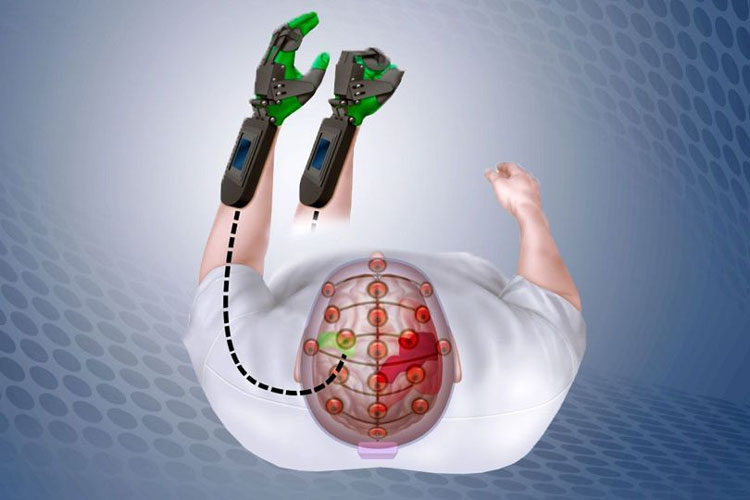Paralyzed patients use their minds to control device
Patients were able to use their minds to open and close a device fitted over their hands, allowing them to get a modicum of control back a study from the Washington University School of Medicine in St. Louis has shown.
This groundbreaking mind-controlled device could help paralyzed stroke patients regain movement in their limbs.
Using a brain-computer interface, the uninjured areas of the patients’ brains were trained to take over functions previously carried out by the injured sections of the brain, said the study.
“We have shown that a brain-computer interface using the uninjured hemisphere can achieve meaningful recovery in chronic stroke patients,” said Eric Leuthardt, professor of neuroscience and biomedical engineering, and co-author of the study.
There are more than 100,000 strokes in the UK each year and it is the country’s fourth single leading cause of death, according to Stroke Association. What’s more, almost two-thirds of stroke survivors leave hospital with a disability.
In the first weeks after a stroke, people rapidly recover some abilities, but their progress typically plateaus after around three months, said the researchers.
“We chose to evaluate the device in patients who had their first stroke six months or more in the past because not a lot of gains are happening by that point,” said co-author Thy Huskey, a neurology professor who is also a program Director at the Stroke Rehabilitation Center of Excellence at The Rehabilitation Institute of St. Louis.
“Some lose motivation. But we need to continue working on finding technology to help this neglected patient population.”
In general, areas of the brain that control movement are on the opposite side of the body from the limbs they control. However, around a decade ago, the researchers discovered that a small area of the brain played a role in planning movement on the same side of the body.
They realized that to move the left hand, electrical signals for movement planning first appear in a motor area on the left side of the brain. Within milliseconds, the right-sided motor areas become active, and the movement intention is translated into actual contraction of muscles in the hand.
A person whose left hand and arm are paralyzed has sustained damage to the motor areas on the right-side of the brain. But the left-side of the person’s brain is often intact, meaning many stroke patients can still generate the electrical signal needed to move. The signal, however, goes nowhere since the area of the brain that executes the movement is out of action.
“The idea is that if you can couple those motor signals associated with moving the same-sided limb with the actual movements of the hand, new connections will be made in your brain that allow the uninjured areas of your brain to take over control of the paralyzed hand,” explained Leuthardt.
The researchers used a device called the Ipsihand, developed by Washington University scientists, to detect the wearer’s intention to open or close their paralyzed hand. The moveable brace fits over the paralyzed hand and uses embedded electrodes to detect electrical signals in the brain.
After detecting the intention to move from the wearer’s brain, it moves the hand in a pincer-like grip, with the second and third fingers bending to meet the thumb.
“Of course, there’s a lot more to using your arms and hands than this, but being able to grasp and use your opposable thumb is very valuable,” Huskey said.
In the study, published in the journal Stroke, participants were trained to use the device at home. The moderately- to severely-impaired test patients were asked to use the Ipsihand at least five days a week, for 10 minutes, twice a day. Ten patients of the original 13 completed the study.
Standard motor skills evaluations were carried out at the start of the study and every two weeks throughout. After 12 weeks of using the device, the patients’ scores increased an average of 6.2 points on a 57-point scale.
While that might not sound like much, it could be the difference between a recovering stroke patient being able to dress or not, representing a meaningful improvement in the quality of life.
The researchers believe that as the technology is developed to be better at picking up brain signals, it will become even more effective at helping stroke patients recover a degree of movement.
There are more than 1.2 million stroke survivors in the UK alone, so the impact of the device in future could be considerable.




Comments are closed, but trackbacks and pingbacks are open.